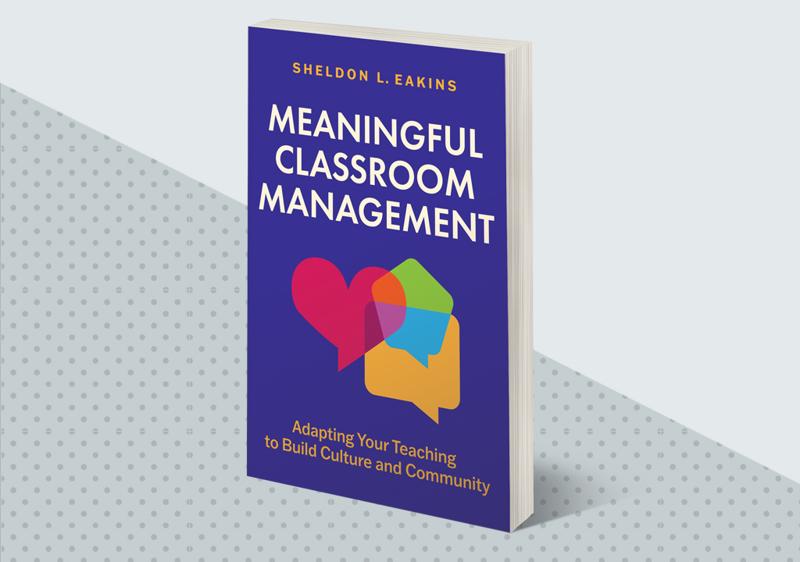Creating a supportive and caring space for students to learn is a top priority for educators. How we see our students can have a huge impact on that space. In Meaningful Classroom Management: Adapting Your Teaching to Build Culture and Community (ASCD 2025), Sheldon Eakins encourages teachers to rethink traditional classroom norms and consider the diverse backgrounds of students. In this exclusive excerpt, Eakins walks us through the Teacher LENS, a framework that can build relationships with students and boost authentic learning.
The Teacher LENS Framework
The Teacher LENS is a practical tool for fostering a culturally responsive classroom where both individualistic and collectivistic values thrive. The Teacher LENS encourages educators to:
- Observe student behavior through a culturally sensitive lens.
- Identify potential mismatches between their expectations and students’ cultural norms.
- Adapt strategies to honor diverse learning styles and create a more inclusive classroom.
The framework consists of four components:
- L: Look for biases.
- E: Examine verbal and nonverbal communication.
- N: Notice group dynamics.
- S: Shift perspectives and interpret behavior.
Look for Biases
Focus: Before observing your students, take a moment to reflect on your own potential biases. We all have assumptions about what a “well-behaved” or “engaged” student should look like. These biases often stem from our cultural backgrounds and teaching experiences.
Cultural implication: Your biases can cloud your understanding of student behavior, leading to misunderstandings or misjudgments. For example, what you perceive as disruptive might be a culturally appropriate way of engaging or communicating. Recognizing your own biases can help you create a more empathetic and inclusive classroom environment.
Questions:
- What cultural norms do I prioritize in my classroom (e.g., independence, silence, competition)?
- How might these norms influence my perception of student behavior?
- Am I open to behaviors that challenge my cultural expectations?
We all have assumptions about what a 'well-behaved' or 'engaged' student should look like.
Examine Verbal and Nonverbal Communication
Focus: Pay close attention to how students interact verbally and nonverbally. Verbal processing—talking through ideas and problems—is a key learning strategy in many cultures. Nonverbal cues, such as eye contact, gestures, or body language, may also carry significant cultural meaning.
Cultural implication: Students from different backgrounds may express engagement, respect, or frustration in ways that differ from your expectations. For example, in some cultures, avoiding eye contact might be a sign of respect rather than disengagement.
Questions:
- Are students verbally processing their thoughts individually or in groups?
- How do students use body language or gestures to communicate?
- How do students engage nonverbally (e.g., eye contact, posture, proximity)?
Notice Group Dynamics
Focus: Observe how students interact during group tasks. In collectivist cultures, collaboration, mutual support, and group success are highly valued. Students may naturally share ideas and help one another solve problems.
Cultural implication: Traditional classroom management often emphasizes individual work and quiet compliance, which can stifle students from collectivist cultures. Observing group dynamics can help you create opportunities for collective learning that align with their strengths.
Questions:
- Are students helping and supporting one another in group tasks?
- How are ideas shared and discussed during collaborative activities?
- Do students appear more engaged in group activities compared to individual activities?
Shifting your perspective helps reduce the risk of misjudging students who are simply responding to their cultural norms.
Shift Perspectives and Interpret Behavior
Focus: When you encounter behavior that seems off task or disruptive, pause and consider whether it might be culturally influenced. Reframing your interpretation through a cultural lens can lead to greater understanding and prevent unnecessary conflict.
Cultural implication: Shifting your perspective helps reduce the risk of misjudging students who are simply responding to their cultural norms. This approach fosters a more inclusive environment where all students feel respected and understood.
Questions:
- Is the behavior I’m observing truly disruptive, or is it culturally appropriate (e.g., talking during group problem solving)?
- How can I adjust my teaching strategies to better accommodate these cultural differences?
- What changes can I make to support a more inclusive learning environment?
Observing with Purpose
Using the Teacher LENS framework allows you to see beyond the surface of student behavior. By looking for biases, examining verbal and nonverbal communication, noticing group dynamics, and shifting your perspective, you can gain a deeper understanding of your students’ cultural needs. Incorporating this approach into your daily practice will not only help you better interpret behaviors but also strengthen your classroom community by creating a space where all students feel valued and understood.
Meaningful Classroom Management
Rethink traditional classroom norms and create spaces where every student feels they belong and can succeed.









